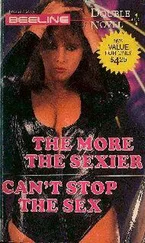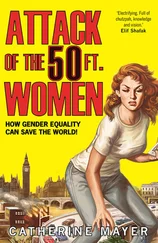24. Peter Pan: Lisa Chaney, Hide-and-Seek with Angels: A Life of J. M. Barrie (New York: St. Martin’s Press, 2005), 2.
25. Orwell’s 1984 and Animal Farm : Fitzgerald, The Genesis of Artistic Creativity , 89.
26. Charlie Brown: David Michaelis, Schulz and Peanuts: A Biography (New York: Harper, 2007).
27. Schindler’s List, E.T. , and Close Encounters of the Third Kind : Joseph McBride, Steven Spielberg: A Biography (New York: Simon & Schuster, 1997), 57, 68.
28. Google: Ken Auletta, Googled: The End of the World as We Know It (New York: Penguin, 2009), 32
29. Harry Potter: Interview of J. K. Rowling by Shelagh Rogers and Lauren McCormick, Canadian Broadcasting Corp., October 26, 2000.
30. “Neither E=mc 2 nor Paradise Lost ”: Winifred Gallagher, I.D.: How Heredity and Experience Make You Who You Are (New York: Random House, 1996), 26.
31. vast majority of teachers believe: Charles Meisgeier et al., “Implications and Applications of Psychological Type to Educational Reform and Renewal,” Proceedings of the First Biennial International Conference on Education of the Center for Applications of Psychological Type (Gainesville, FL: Center for Applications of Psychological Type, 1994), 263–71.
32. Carl Jung had published a bombshell: Carl G. Jung, Psychological Types (Princeton, NJ: Princeton University Press, 1971; originally published in German as Psychologische Typen [Zurich: Rascher Verlag, 1921]), see esp. 330–37.
33. the majority of universities and Fortune 100 companies: E-mail to the author, dated July 9, 2010, from Leah L. Walling, director, Marketing Communications and Product Marketing, CPP, Inc.
34. introverts and extroverts differ in the level of outside stimulation … Many have a horror of small talk: See Part Two: “Your Biology, Your Self?”
35. introvert is not a synonym for hermit: Introversion is also very different from Asperger’s syndrome, the autism spectrum disorder that involves difficulties with social interactions such as reading facial expressions and body language. Introversion and Asperger’s both can involve feeling overwhelmed in social settings. But unlike people with Asperger’s, introverts often have strong social skills. Compared with the one third to one half of Americans who are introverts, only one in five thousand people has Asperger’s. See National Institute of Neurological Disorders and Stroke, Asperger Syndrome Fact Sheet, http://www.ninds.nih.gov/disorders/asperger/detail_asperger.htm.
36. the distinctly introverted E. M. Forster: Sunil Kumar, A Companion to E. M. Forster , vol. 1 (New Delhi: Atlantic Publishers and Distributors, 2007).
37. “human love at its height”: E. M. Forster, Howards End (London: Edward Arnold, 1910).
38. Shyness is the fear of social disapproval: Elaine N. Aron et al., “Adult Shyness: The Interaction of Temperamental Sensitivity and an Adverse Childhood Environment,” Personality and Social Psychology Bulletin 31 (2005): 181–97.
39. they sometimes overlap: Many articles address this question. See, for example, Stephen R. Briggs, “Shyness: Introversion or Neuroticism?” Journal of Research in Personality 22, no. 3 (1988): 290–307.
40. “Such a man would be in the lunatic asylum”: William McGuire and R. F. C. Hall, C. G. Jung Speaking: Interviews and Encounters (Princeton, NJ: Princeton University Press, 1977), 304.
41. Finland is a famously introverted nation: Aino Sallinen-Kuparinen et al., Willingness to Communicate, Communication Apprehension, Introversion, and Self-Reported Communication Competence: Finnish and American Comparisons . Communication Research Reports, 8 (1991): 57.
42. Many introverts are also “highly sensitive”: See chapter 6.
CHAPTER 1: THE RISE OF THE “MIGHTY LIKEABLE FELLOW”
1. The date: 1902 … held him back as a young man: Giles Kemp and Ed
2. ward Claflin, Dale Carnegie: The Man Who Influenced Millions (New York: St. Martin’s Press, 1989). The 1902 date is an estimate based on the rough contours of Carnegie’s biography.
3. “In the days when pianos and bathrooms were luxuries”: Dale Carnegie, The Quick and Easy Way to Effective Speaking (New York: Pocket Books, 1962; revised by Dorothy Carnegie from Public Speaking and Influencing Men in Business , by Dale Carnegie).
4. a Culture of Character to a Culture of Personality: Warren Susman, Culture as History: The Transformation of American Society in the Twentieth Century (Washington, DC: Smithsonian Institution Press, 2003), 271–85. See also Ian A. M. Nicholson, “Gordon Allport, Character, and the ‘Culture of Personality,’ 1897–1937,” History of Psychology 1, no. 1 (1998): 52–68.
5. The word personality didn’t exist: Susman, Culture as History , 277: The modern idea of personality emerged in the early twentieth century and came into its own only in the post–World War I period. By 1930, according to the early personality psychologist Gordon W. Allport, interest in personality had reached “astonishing proportions.” See also Sol Cohen, “The Mental Hygiene Movement, the Development of Personality and the School: The Medicalization of American Education,” History of Education Quarterly 32, no. 2 (1983), 123–49.
6. In 1790, only 3 percent … a third of the country were urbanites: Alan Berger, The City: Urban Communities and Their Problems (Dubuque, IA: William C. Brown Co., 1978). See also Warren Simpson Thompson et al., Population Trends in the United States (New York: Gordon and Breach Science Publishers, 1969).
7. “We cannot all live in cities”: David E. Shi, The Simple Life: Plain Living and High Thinking in American Culture (Athens, GA: University of Georgia Press, 1985), 154.
8. “The reasons why one man gained a promotion”: Roland Marchand, Advertising the American Dream: Making Way for Modernity, 1920–1940 (Berkeley: University of California Press, 1985), 209.
9. The Pilgrim’s Progress : John Bunyan, The Pilgrim’s Progress (New York: Oxford University Press, 2003). See also Elizabeth Haiken, Venus Envy: A History of Cosmetic Surgery (Baltimore: Johns Hopkins University Press, 1997), 99.
10. a modest man who did not … “offend by superiority”: Amy Henderson, “Media and the Rise of Celebrity Culture,” Organization of American Historians Magazine of History 6 (Spring 1992).
11. A popular 1899 manual: Orison Swett Marden, Character: The Grandest Thing in the World (1899; reprint, Kessinger Publishing, 2003), 13.
12. But by 1920, popular self-help guides … “That is the beginning of a
13. reputation for personality”: Susman, Culture as History , 271–85.
14. Success magazine and T he Saturday Evening Post : Carl Elliott, Better Than Well: American Medicine Meets the American Dream (New York: W. W. Norton, 2003), 61.
15. a mysterious quality called “fascination”: Susman, 279.
Читать дальше
![Сьюзан Кейн Quiet [The Power of Introverts in a World That Can't Stop Talking] обложка книги](/books/33084/syuzan-kejn-quiet-the-power-of-introverts-in-a-wo-cover.webp)











